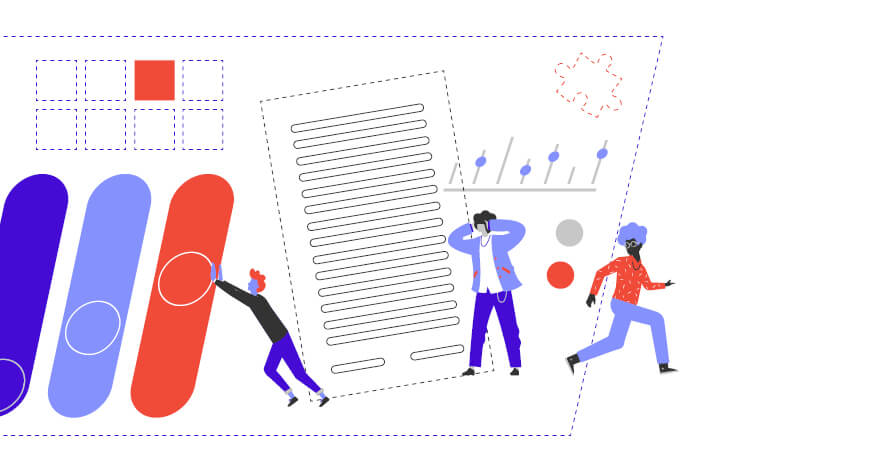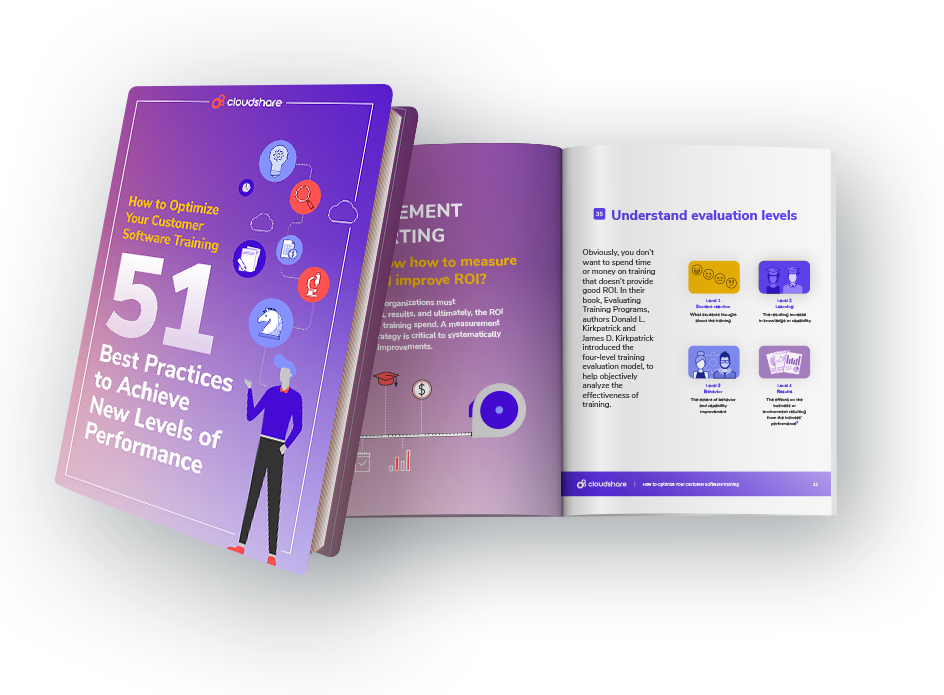Virtual training
What’s Plaguing Your Trainees? 8 Reasons Your Users Are Ditching Training Halfway Through

So you’ve got the perfect software platform. A solution that you’re certain will revolutionize the lives and businesses of your customers. At least, it would if people could figure out how to use it.
It’s not that you haven’t tried to devise a customer training process. You certainly have — the problem is that almost nobody ever seems to finish it. A good part of your users ‘ditch’ the training halfway through, meaning you’re not creating an engaging enough experience.
You aren’t alone in this, either. According to speech analytics provider CallMiner, American companies lose approximately $136.8 billion annually to avoidable customer switching. And a poor onboarding experience is a leading cause of initial abandonment.
It’s imperative that you don’t simply invest in customer training programs but that you do so intelligently. In large part, that begins with understanding where your current approach is going wrong. Because there are many ways it can.
1. You’re Not Focusing on Your Customers Needs
You cannot effectively implement a customer training program if all you have is the nebulous idea that you want to ‘teach people how to use your software.’ You need to be more specific than that. What are you trying to accomplish with your customer training, and by what metrics are you measuring its success?
You also need a process by which you can collect and respond to customer feedback. Not only does this help you determine what is and isn’t working, but it’s also a cornerstone of customer retention. Clients frequently switch to another company if they don’t feel appreciated enough — demonstrating that you understand and care about their feedback is therefore critical.
Some core areas of focus you should consider initially include:
- What are the most complex features or functions of your software?
- Are there any usability bottlenecks that you need to iron out?
- Who needs to understand how your software works?
- Who actually uses your software?
- What role will software for customer training play?
2. Documentation is Killing Onboarding
Training documentation is often about 10X too long. Your customers do not have limitless time to spend on training. On the contrary, many of them are extremely busy. There’s still a place for whitepapers and eBooks, certainly — but it’s most assuredly not in training.
As your training materials grow longer and more cumbersome, abandonment increases.
Both documentation and training need to be short and to the point. Focus on the likeliest stumbling blocks, and leave the technical stuff for later. Make sure everything is easy to understand and easily digestible.
51 Best Practices to Boost Customer Software Training

3. You’re Trying to Do Too Much Too Fast
Similar to how too much documentation can kill onboarding, trying to pack too much information into training can drive customers away with just as much ease. We get it — it’s difficult to replicate the complexities of your software platform in a streamlined training environment. Unfortunately, you need to.
Because otherwise, you have only two alternatives, none of which are feasible.
- Trying to cover everything, however long it takes. Especially with more advanced and comprehensive software, you could potentially be looking at training that takes place across multiple days. The thing is, we can more or less guarantee that your customers are already drowning in a sea of digital noise. If you add even more unnecessary information to that noise, how much of it do you think people are going to retain?
- Condense, condense, condense. People’s time is limited. You realize that. So you attempt to throw everything at your customers in as short a timeframe as possible. Again, this won’t lead to retention, only confusion and frustration.
No one said following customer training best practices was going to be easy.
4. The Training is Simply Boring
Or in other words — the engagement issue.
You’ve likely heard that word thrown around in multiple contexts. In this case, though, it’s more than a buzzword. Whether due to a poor user experience or simply dull delivery, if your training isn’t designed to be interesting or enjoyable, you’re just hurling information at your customers and hoping it sticks.
It won’t.
Most of us have had to sit through a painfully boring training video. Suffer through a horrendous slideshow. Struggle to thumb over a training manual that’s dryer than the Sahara.
And most customers now demand better from their training.
First, stay away from overly formal language. The vast majority of customers prefer a casual, informal tone regardless of industry. You want to convey information in a way that actually feels interesting, rather than coming across as some stuffy college lecturer.
Other options include:
- Flexible instruction methods. Consider that different people learn in different ways. With flexible instruction methods, you can tailor your training to their style of learning.
- Create a collaborative experience. Encouraging collaboration during your training through social learning features such as discussion boards and group chats keeps users engaged and feeling like they are part of the process.
- Keep the focus on customer outcomes. Think about the unique interests and values of your customers and find a way to inject those organically into your training.
- Avoid talking with buzzwords. Eliminate jargon and overly-complicated terminology from your training sessions. If something wouldn’t be understandable to a layperson, it likely has no place in your training.
5. Are You Using the Right Training Software for Your Needs?
Technical disruptions. High latency. Terrible UI.
These are just a few of the more common issues your customers might encounter if you don’t do the necessary work to implement proper customer training software. Your training could be the most interesting and engaging in the world. But if the platform you’re using to deliver it is more painful than getting a tooth pulled?
People aren’t going to care. From learning management systems to more effective content delivery, the right platform makes an enormous difference. And the wrong platform can kill your onboarding process before it even begins.
6. Everything is Too Passive
How much interaction does your training facilitate between instructor and students? How much collaboration does it encourage between participants? Does it engage only a small group of users, or does it bring as many people and departments into the training process as possible?
Again, this all circles back to engagement.
A demo video is passable at best. A live demo is an improvement. An interactive demo in a sandbox where customers can experiment to their heart’s content is even better.
Remember, demo automation is the end goal for companies that are serious about creating compelling and intuitive virtual training labs.
7. No Carrots, Only Sticks
So your training is engaging. You’ve taken the necessary steps to provide an interesting, interactive virtual experience. That’s great!
But you could still do better.
For more comprehensive virtual training labs, why not provide your customers with some means of gauging their progress? Small rewards to recognize and measure their success? To that end, you might consider applying game design to your training, such as leaderboards, light competitive elements, or even interactive gameplay sessions.
If a trainee has no way of knowing what sort of progress they’re making or whether they’ve been improving, there’s a good chance they’ll get discouraged, and discouragement is just one step away from abandonment.
8. Training isn’t the Issue — It’s Your Technology
So, you’ve followed all the advice laid out in this piece, yet people are still failing to see your training through to the end. At this point, it might be worth considering that your training wasn’t the issue at all. There may be some severe usability bottleneck in your software that’s leaving people so frustrated that they simply give up.
Fortunately, if you’re collecting customer feedback, it won’t be hard to identify and address the issue.
Recapture Your Audience With an Unforgettable Experience
At this point, it should be relatively obvious that businesses are losing their audiences where training and onboarding is concerned. They simply lack the necessary resources to create interesting, engaging training experiences. And that’s precisely where CloudShare comes in.
Our award-winning business acceleration platform provides hands-on software experiences ranging from virtual demos to hands-on training. Through active monitoring, seamless connectivity, and unbeatable usability, we’ll help you do more than simply recapture your audience. We’ll help you accelerate your entire customer journey, providing you with actionable insights and purpose-built environments from pre-sales all the way to customer education.
For most businesses, customer training is broken. Yours doesn’t have to be among them. Connect with a CloudShare SDR today, and we’ll help you get your prospects exactly where you need them to be. Let’s talk >
The fancy text generator will make your words stand out when posting on social media.


